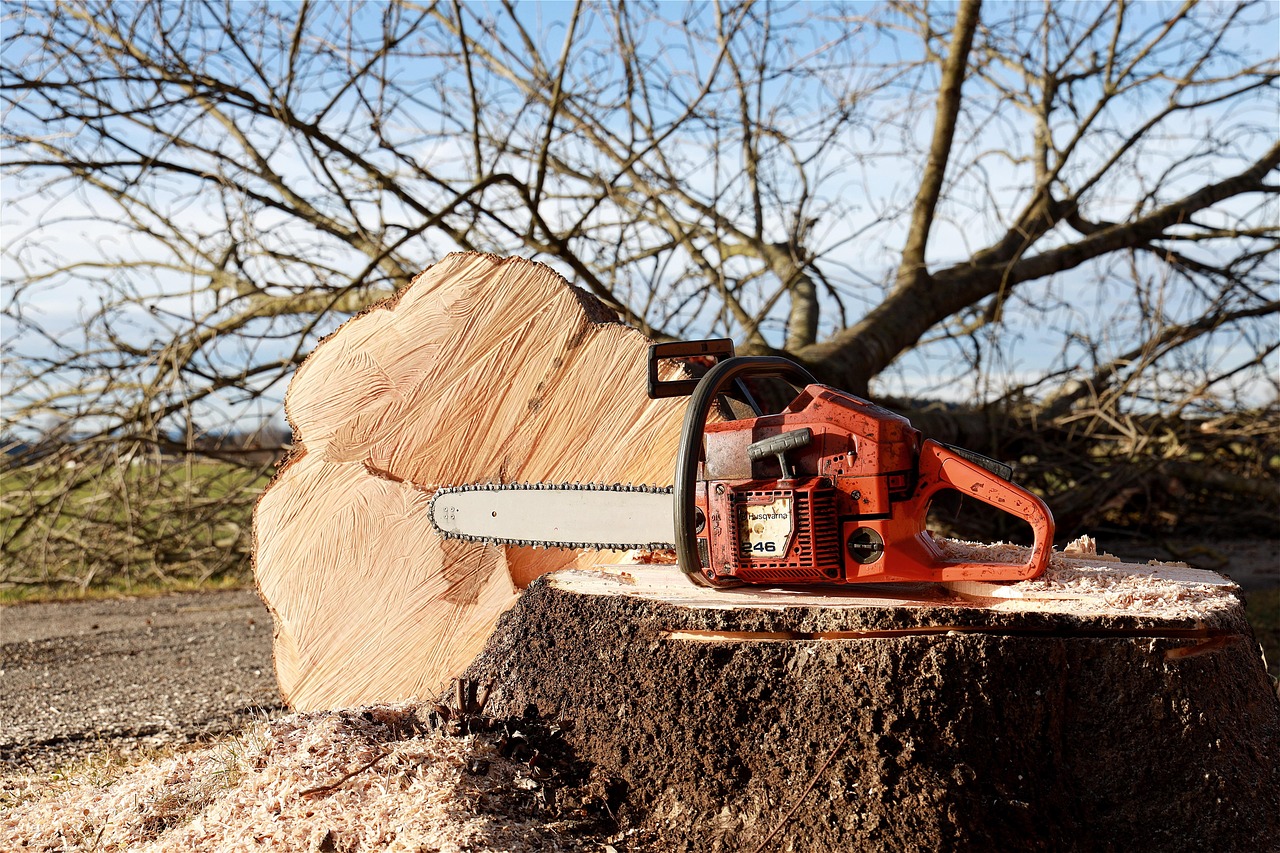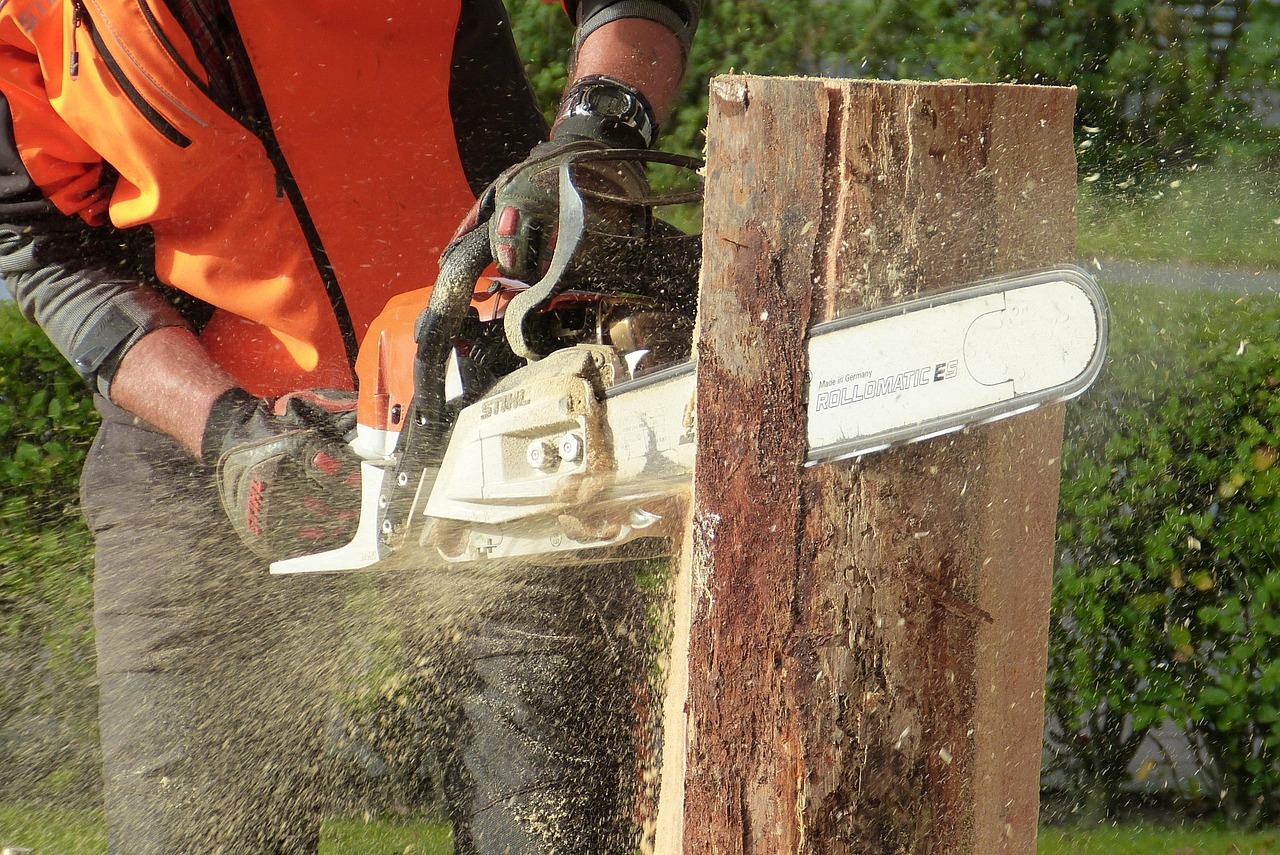Tree pruning is essential for managing sunlight in patios. Proper pruning allows sunlight to filter through, enhancing plant growth and creating a comfortable outdoor space. It also helps maintain tree health and reduces the risk of damage during storms.
Patio areas often serve as extensions of our living spaces. They provide a place to relax, entertain, and enjoy nature. However, trees can create challenges when it comes to managing sunlight. Overgrown branches can block sunlight, leading to poor plant growth and diminished enjoyment of the patio. Understanding how to prune trees effectively can help manage these issues.

Tree pruning not only improves sunlight access but also promotes the overall health of the tree. When done correctly, it encourages new growth and can help prevent diseases. Regular pruning helps maintain a tree’s shape and size, making it more manageable and aesthetically pleasing.
In addition to these benefits, pruning can enhance safety. Overhanging branches can pose risks to structures and individuals. Keeping trees well-maintained reduces the likelihood of branches breaking during storms or heavy winds.
The Importance of Sunlight Management
Sunlight is crucial for the growth and development of plants in patio spaces. Here are a few reasons why managing sunlight through tree pruning is important:

- Optimal Growth: Plants require adequate sunlight for photosynthesis. Insufficient light can stunt their growth and lead to unhealthy plants.
- Temperature Control: Trees can create shade, helping to cool patio areas during hot months. However, too much shade can lead to discomfort.
- Aesthetic Appeal: A well-pruned tree enhances the beauty of your patio. It helps create an inviting atmosphere for relaxation and gatherings.
Understanding the balance between shade and sunlight is vital for creating an enjoyable outdoor environment. Pruning allows you to customize the amount of light that reaches your patio area based on your preferences.
Types of Pruning Techniques
There are several techniques used in tree pruning, each serving a specific purpose. Here are some common methods:
| Pruning Technique | Description | Benefits |
|---|---|---|
| Crown Thinning | This involves removing select branches throughout the tree’s crown. | Improves light penetration and air circulation. |
| Crown Raising | Lower branches are removed to raise the crown above a desired height. | Enhances access and visibility under the tree. |
| Crown Reduction | This technique reduces the overall size of the tree crown by shortening branches. | Helps maintain a smaller, manageable tree shape. |
| Deadwooding | Removing dead or dying branches to improve health. | Enhances aesthetics and prevents pest infestations. |
Choosing the right pruning technique depends on the specific goals you have for your patio space. Each technique can help manage sunlight differently, allowing you to optimize your outdoor environment.

Timing Your Pruning
When pruning trees for sunlight management, timing is critical. The best time to prune most trees is during their dormant season, typically late winter to early spring. Pruning during this time minimizes stress on the tree and promotes healthy growth as it enters the growing season.
However, some trees may have specific needs or considerations. For example, flowering trees should be pruned after blooming to avoid cutting off potential flowers for the following season. Understanding the species of your trees will help determine the best timing for pruning.
In addition to seasonal timing, weather conditions play a role in successful pruning. It is best to prune on a dry day to reduce the chances of disease transmission through open wounds.

Tools Needed for Pruning
To effectively manage tree pruning, having the right tools is essential. Here are some common tools used in tree pruning:
- Hand Pruners: Ideal for small branches and detailed work.
- Loppers: Useful for cutting thicker branches that are difficult to reach.
- Pruning Saw: Necessary for larger limbs that require more power.
- Safety Gear: Always wear gloves, goggles, and appropriate clothing to protect yourself during pruning.
Having these tools on hand ensures you are prepared for any pruning task while keeping safety as a top priority.
By understanding tree pruning for sunlight management, you enhance both the functionality and beauty of your patio space. Effective pruning techniques can significantly improve your outdoor experience, allowing you to enjoy nature while ensuring healthy plant life thrives in your garden.
Understanding Tree Growth Patterns
To successfully manage tree pruning for sunlight management, it is essential to understand how trees grow. Different species of trees have varying growth habits that affect how and when they should be pruned. Recognizing these growth patterns can lead to more effective pruning strategies.
Trees generally grow in two ways: apical dominance and lateral growth. Apical dominance refers to the tree’s tendency to grow upward from the main leader or central stem. Lateral growth occurs when side branches develop, which can lead to denser foliage.
Apical Dominance vs. Lateral Growth
Here are some characteristics of both growth patterns:
- Apical Dominance:
- The central stem grows taller and stronger.
- This growth pattern can lead to shading below the tree.
- Regular pruning can help manage height and encourage lateral branching.
- Lateral Growth:
- Side branches spread out from the main stem.
- This can create a bushier appearance, which may block sunlight.
- Thinning out lateral branches promotes better light penetration.
By understanding whether a tree exhibits apical dominance or lateral growth, you can tailor your pruning techniques to enhance sunlight access in your patio area.
Choosing the Right Time for Pruning
As previously mentioned, timing is crucial when it comes to tree pruning. The right time can vary based on the tree species and local climate conditions. Here are some key points to consider:
Seasonal Considerations
Most trees benefit from pruning during their dormant season. However, here are some specifics:
- Late Winter to Early Spring: This is often the best time for most deciduous trees. Pruning during dormancy minimizes stress and encourages strong spring growth.
- Summer Pruning: This technique can be effective for certain trees, especially those that have excessive growth. It can help control size but may also expose the tree to pests and diseases.
- Post-Bloom Pruning: For flowering trees, pruning should occur after blooming to avoid cutting off future flowers.
Weather Conditions
In addition to seasonal timing, consider the weather conditions:
- Avoid pruning during wet or rainy conditions. Moisture increases the risk of fungal infections.
- Do not prune during extreme heat, as this can stress the tree.
The Role of Tree Species in Pruning
Different tree species have unique characteristics that influence how they should be pruned. Here are some common types of trees and important considerations for each:
| Tree Species | Pruning Considerations | Best Pruning Time |
|---|---|---|
| Maple | Avoid heavy pruning in late winter; it can bleed sap. | Late summer or early fall is ideal. |
| Oak | Prune in late winter to prevent oak wilt disease. | Late winter before buds break. |
| Pine | Prune only to remove dead or damaged branches; avoid excessive cutting. | Late spring after new growth appears. |
| Cherry | Prune immediately after flowering to maintain shape. | After blooming in spring. |
Selecting the right time and technique for pruning based on tree species will help ensure healthy growth and optimal sunlight management in your patio space.
Common Mistakes in Tree Pruning
Avoiding common mistakes can greatly improve the effectiveness of your pruning efforts. Here are some pitfalls to watch out for:
- Over-Pruning: Removing too much foliage can stress the tree and hinder its growth. Aim for a balanced approach.
- Poor Cutting Techniques: Using dull tools or making improper cuts can damage the tree. Always use sharp tools and make clean cuts.
- Ignoring Tree Health: Focusing solely on aesthetics without considering the overall health of the tree can lead to problems. Always prioritize the health of the tree.
- Pruning at the Wrong Time: Improper timing can stress trees and lead to diseases. Be mindful of seasonal changes and species-specific needs.
Avoiding these common mistakes will help create a more effective pruning routine, ensuring both healthy trees and a well-lit patio environment.
The process of tree pruning is integral to managing sunlight in patios. By understanding tree growth patterns, timing your efforts, and avoiding common mistakes, you can enhance both safety and aesthetic appeal while ensuring that your patio space remains enjoyable throughout the year.
Pruning Techniques for Sunlight Management
Effective tree pruning involves specific techniques that can significantly improve sunlight penetration in patio areas. Each technique serves a particular purpose and can be used based on the desired outcome. Understanding these techniques will help you create a balanced environment that allows sunlight to nourish your plants while maintaining tree health.
Crown Thinning
Crown thinning involves selectively removing branches throughout the tree’s crown. This technique helps increase light penetration and air circulation within the tree. Here are some key points to consider:
- Benefits: Improves the overall health of the tree and allows more sunlight to reach plants below.
- How to Do It: Focus on removing smaller, weaker branches that are crowding the center of the tree.
- Timing: Best performed during late winter or early spring while the tree is still dormant.
Crown Raising
Crown raising involves removing lower branches to elevate the tree’s crown. This technique is particularly useful for increasing visibility and access beneath the tree.
- Benefits: Provides more space for patio furniture and activities, while enhancing the aesthetic appeal of the landscape.
- How to Do It: Trim branches at least six feet above ground level, ensuring not to remove too much foliage at once.
- Timing: Late winter or early spring is ideal, but it can also be done in late summer for certain species.
Crown Reduction
Crown reduction reduces the overall size of the tree’s canopy. This technique is useful for controlling tree height and maintaining a manageable size without harming its structure.
- Benefits: Helps prevent trees from blocking sunlight while maintaining their natural shape.
- How to Do It: Cut back branches to lateral buds or branches that are facing outward, promoting growth in a desired direction.
- Timing: Prune during late winter for optimal results, avoiding heavy cuts during the growing season.
Seasonal Pruning Strategies
Seasonal strategies are important for effective pruning. The approach can vary based on seasonal growth patterns and specific goals for sunlight management. Here are some strategies for each season:
Spring Pruning
Spring is a crucial time for pruning as trees begin to wake from dormancy. Here’s what you should know:
- Focus on Deadwood: Remove any dead or diseased branches to promote healthy growth.
- Light Thinning: Perform light thinning on fast-growing species to prevent excessive shading of surrounding plants.
Summer Pruning
Summer pruning can be effective for controlling growth. This is particularly useful for trees that grow rapidly.
- Control Size: Trim back excessive growth to maintain shape and promote better light access.
- Monitor Growth: Observe how trees react to summer pruning; ensure that you don’t remove too much foliage at once.
Fall Pruning
While fall is generally not recommended for most pruning, it can be an excellent time for certain species.
- Avoid Heavy Cuts: Focus on removing any dead or damaged branches rather than significant shaping.
- Prepare for Winter: Ensure that trees are healthy heading into winter by clearing any weak branches that could break under snow or ice.
The Benefits of Proper Pruning for Patios
The benefits of proper tree pruning extend beyond just managing sunlight. Here are some additional advantages:
- Improved Airflow: Thinning out branches allows better airflow, reducing the risk of diseases caused by stagnant air.
- Enhanced Aesthetics: Well-pruned trees create a visually pleasing landscape that complements patio areas.
- Increased Safety: Regular pruning reduces the risk of falling branches, making outdoor spaces safer for use.
- Pest Management: Removing diseased or damaged branches can help control pest populations that may harm healthy areas of the tree.
Professional Help vs. DIY Pruning
Deciding whether to prune your trees yourself or hire a professional can depend on several factors. Consider the following points when making your decision:
When to Hire a Professional
- Large Trees: If your trees are over 15 feet tall, it may be safer to hire a professional with the right equipment and expertise.
- Lack of Experience: If you are unsure about how to prune effectively, a professional can help ensure that your trees remain healthy.
- Safety Concerns: If your trees are near power lines or structures, it is best to leave pruning to certified arborists.
When to DIY
- Small Trees and Shrubs: If you have smaller trees or shrubs, DIY pruning can be manageable and rewarding.
- Routine Maintenance: Regularly maintaining your trees through light pruning can often be done safely by homeowners.
- Satisfaction of Learning: For those interested in gardening, taking on pruning tasks can be a fulfilling learning experience.
No matter which option you choose, understanding the basics of tree pruning will empower you to create a patio space that thrives under the right conditions. With careful attention to timing, technique, and species-specific needs, you can enjoy a beautifully lit and healthy outdoor area year-round.
Additional Considerations for Effective Tree Pruning
In addition to the techniques and strategies discussed, there are several other factors to consider for effective tree pruning that can enhance sunlight management in your patio area.
Understanding Tree Biology
Understanding the biology of trees can greatly influence your pruning decisions. Here are key points to keep in mind:
- Growth Patterns: Trees grow in phases. Knowing when a tree is actively growing versus dormant helps you choose the right time for pruning.
- Response to Pruning: Trees have different responses to pruning. Some species heal quickly, while others may take longer. This can affect your timing and technique choices.
- Callus Formation: After a cut, trees form calluses to heal the wound. Proper cutting techniques minimize damage and promote faster healing.
Environmental Impact
Your pruning practices can also affect the surrounding environment. Consider the following:
- Habitat Preservation: Trees provide habitats for various wildlife. Pruning should be done carefully to avoid disrupting local ecosystems.
- Soil Health: Pruned branches can be chipped and used as mulch, enriching the soil and promoting healthy growth in surrounding plants.
- Water Management: Properly pruned trees can improve water absorption in the soil by reducing competition among plants for moisture.
Maintaining Tools and Equipment
Proper maintenance of your pruning tools is crucial for achieving the best results. Here are some tips:
- Sharpen Blades: Keep your pruners, saws, and loppers sharp to ensure clean cuts that promote quick healing.
- Cleansing Tools: Regularly disinfect tools, especially when moving between trees, to prevent the spread of diseases.
- Storage: Store tools in a dry place to prevent rust and damage, ensuring they are ready for use when needed.
Final Thoughts
Tree pruning is an essential practice for managing sunlight effectively in patios. By applying the right techniques and understanding tree biology, you can significantly enhance both the aesthetics and functionality of your outdoor space. Proper pruning not only allows more light to filter through but also contributes to the overall health of the trees and plants in your garden.
Remember that each tree species may have unique needs, requiring tailored approaches. Whether you choose to prune yourself or hire a professional, being informed about seasonal timing, growth patterns, and environmental considerations will lead to better outcomes. Regular maintenance and monitoring of your trees will help ensure a thriving patio environment where sunlight and shade coexist harmoniously.
The joy of gardening and outdoor living can be greatly amplified by well-managed trees. With thoughtful pruning, your patio can become a welcoming sanctuary filled with light and life. Embrace the art of tree pruning, and enjoy the beautiful balance of nature right outside your door.
